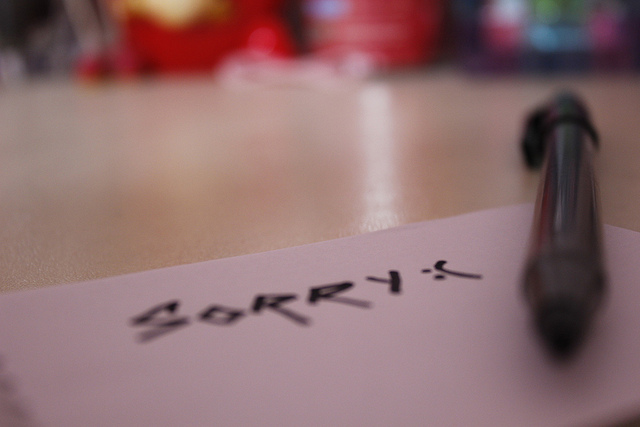
Remember when you were a little kid, and you committed some infraction for which your parents mandated an apology? First you had to think about what you did. Then you had to march over to whomever you wronged and deliver a forced apology (because we all know you were only “sorry” because your parents told you to be). Afterwards, you had to hope that the worst of your punishment was over, and that you were forgiven for being a little jerk and embarrassing your mom and dad.
Just as when you were a kid, apologies are still a process; well, at least the real, sincere ones that you actually mean are. But on the plus side, processes have steps, and steps can be mastered. If making amends is on your list of to-dos for the new year, we’ll show you how to deliver a legitimate apology and hopefully make some strides in your relationships.
Reflect – A sincere apology requires reflection. What did you say or do that calls for fixing? Was your offense a mistake or was it intentional? As my mother always said to me, “If you don’t know why you’re doing something, you probably shouldn’t be doing it.” If you can’t figure out exactly why you’re apologizing, you should hold off on doing so until you can.
Take responsibility – In order to make a sincere apology, you have to own what you did 100 percent. One of the worst ways to apologize is saying, “I’m sorry you feel that way.” Not only does it remove the responsibility from you, but it places the sole responsibility on the person you’re apologizing to. You might as well have said, “I’m sorry your personal emotional imbalance caused you to feel upset.” A much better phrasing would be: “I’m sorry that I made you feel that way.”
Fix it – The most important part of an apology is fixing the problem. You should lay the groundwork for improvement and follow through on what you say. Above everything, the purpose behind an apology is finding a resolution, so if you don’t address how you plan to fix the issue, then it isn’t much of an apology at all. It’s called making amends because it’s an active and ongoing process that involves personal improvement. Make your declaration concrete, and give the other person something to expect from you. Tell them how you want to make it better and then go forward and make it better.
Putting these steps into effect, I’d like to make an apology for one of my chronic slip-ups in 2013 (and pre-2013):
Babycakes,
I apologize for repeatedly leaving the toilet tissue off of the holder, despite the numerous times you asked me not to; I know it really gets on your nerves. While I wish I could say I had a good reason for my actions, the truth is I was just being lazy. Going forward, I will do a better job of fulfilling your simple request and making the bathroom presentable by putting the new roll onto its holder.
FYI: I actually have a legitimate problem with leaving the new roll of toilet tissue in various places that aren’t the holder. Nonetheless, that was pretty simple, right? It doesn’t matter how big or small the infraction, you can try to make it better with a few simple words and some sincere effort towards doing better.
Now get out there, and be sorry … or something like that.
